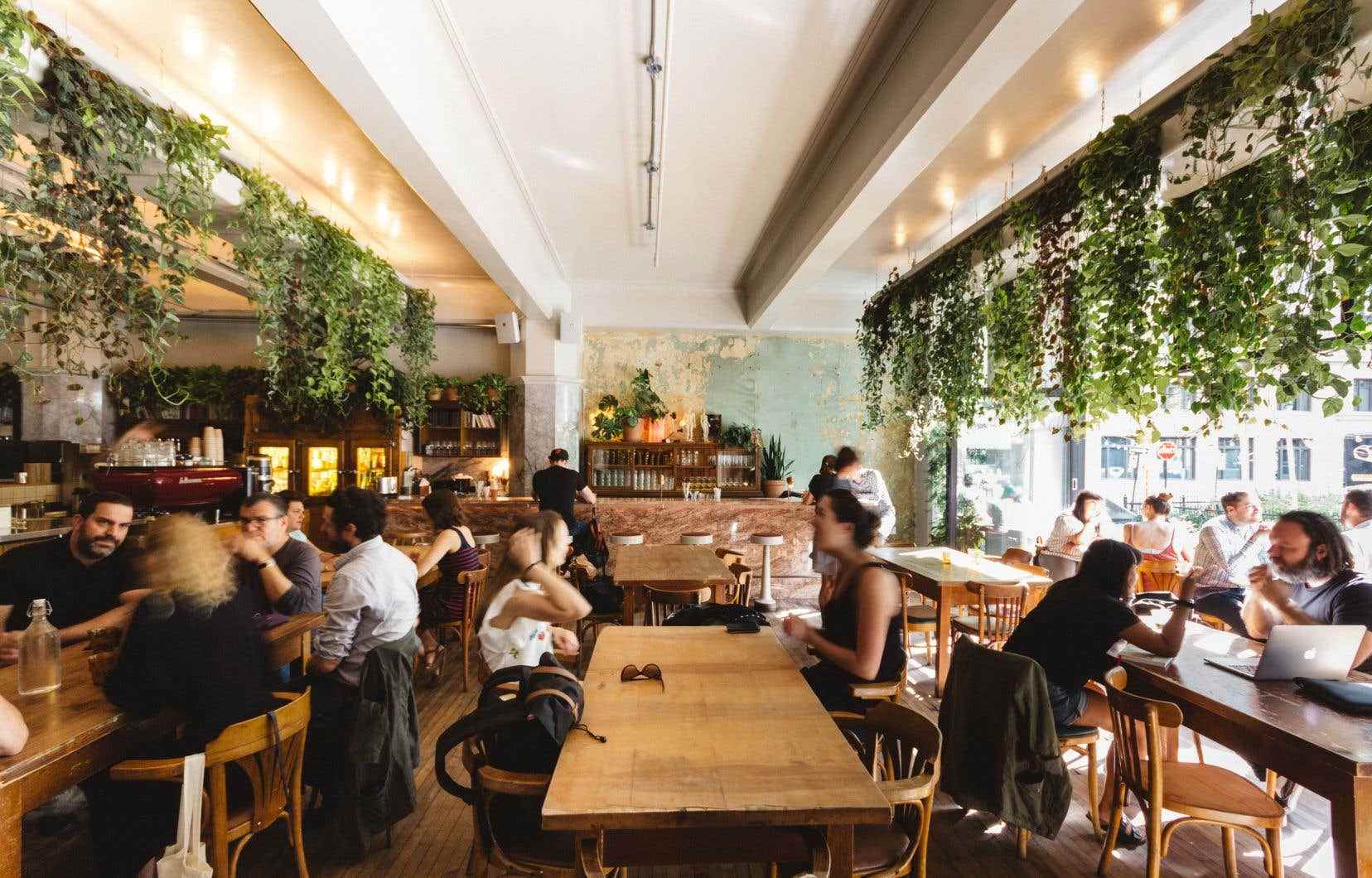This text is part of the special book Plaisirs
Why do we love our restaurants and bars? For the quality of food, drink and service provided to us, of course. But also for the decor that welcomes us and the atmosphere to which it contributes. You know that little admiring wow when we arrive there, or those images etched in our memory when our experience went well? So, at the end of a pandemic which is pushing many restaurateurs to reinvent themselves, has the design of these establishments itself changed?
Architectural designer Zébulon Perron has been working in the restaurant and hotel industry for over 20 years. His unique style is recognizable in many establishments — he has signed a good hundred of them — that have become references in Montreal, such as the Grinder, the Rouge Gorge, the Montreal Plaza, the Royal, Henri Brasserie française, Un po’di più, or Constance coffee again. He is also a partner of three places of happy libations: the Furco, the Parvis and the Philémon.
In the space of 20 years, the designer has witnessed the major transformation of this gourmet universe. “The more the tastes of Quebecers have refined, the more the design of restaurants and bars has taken on importance. If, at the start of my career, I had to convince people to invest in this part of their establishment, that was no longer the case thereafter. »
The 2010s were thus very prolific in terms of restaurant design “so much so that I wondered when it was going to stop”, admits the expert. Then, the pandemic arrived in 2020 with its share of imposed closures, health constraints and supply problems. In the aftermath appeared other problems for the environment, such as the lack of manpower, the explosion of operating costs, the advent of teleworking and competition from meals delivered to homes. We can therefore wonder if the designers have also had to change their tune and revise their ambitions downwards.
Design and the pandemic
The pandemic experience experienced by Zébulon Perron and his team of about twenty people has, it seems, not been catastrophic. “We had to rearrange certain plans, add partitions here and there and delay the Emmanuelle lounge project (the latter will open shortly). But in general, we have continued to create ambitious projects, “he says, specifying that he has notably realized, since 2020, the design of the Marcus restaurant, the Four Seasons hotel, and that of the Bivouac. , at the Hilton DoubleTree hotel.
However, it was not the same for all designers. Thomas Csano, whose theatrical decors are appreciated in a dozen establishments in as many years of business – among others, the Waverly, the Darling, the Petit Dep, the Galaxie Brasserie, as well as the Majestique, of which he is partner—, experienced an almost complete shutdown of operations during the pandemic.
“I was afraid for the future of the restaurant business and mine,” he admits. I had a lot of questions for the aftermath. Should we keep washbasins at the entrance or not, should we design places with partitions right from the start? It is impossible here to play with spaces like in New York, where some houses have been converted into eating places with lots of small rooms. The commercial spaces we occupy are large, and we must maximize them. »
Man is a social animal
Thomas Csano adds that since the complete reopening of the establishments, the success is again at the rendezvous, that the “to take away” has not become generalized and that the customers, finally, conceive their outings above all as pretexts to socialize. . “Our DNA, as designers, is to design lively places, where the atmosphere is also linked to the fact that everyone is glued. And I sincerely believe that as humans, we cannot live with the idea of having a dark cloud above our heads all the time,” admits the designer.
His colleague Zébulon Perron is of the same opinion. “What fascinates me most about my job is the social impact my projects can have. This approach is totally contrary to that of compartmentalization and distancing. And judging by the enthusiasm that restaurateurs show when they come to me with their ideas, I believe that they have simply moved on to another call. »
“The power of forgetting is a great strength”, also indicates Stéphanie Émond, founder of the Balnea spa who has become, for three years, a partner of an architect from the Emondo company. Specialized in masterplanning and in pre-design construction, the one who has collaborated with the Hovey mansion, the Four Seasons and India Rosa, however, has a more nuanced opinion than her colleagues.
“I think that daytime catering has suffered more from the repercussions of the pandemic than evening catering. With the advent of telecommuting and the increase in menu prices, there are fewer business groups than before in restaurants and hotels. I’m no longer asked to design hotel spaces with vast reception rooms. I also observe that due to supply issues, layout, furnishings and decor can be simpler and, importantly, more local,” she says.
So, did Quebec restaurant design finally change when it came into contact with the first great pandemic of the 21st century?e century ? Not that much. It has rather adapted to a clientele wishing to choose between an intimate or collective experience, according to their moods… pandemic or not!
This special content was produced by the Special Publications team of the To have to, relating to marketing. The drafting of To have to did not take part.
